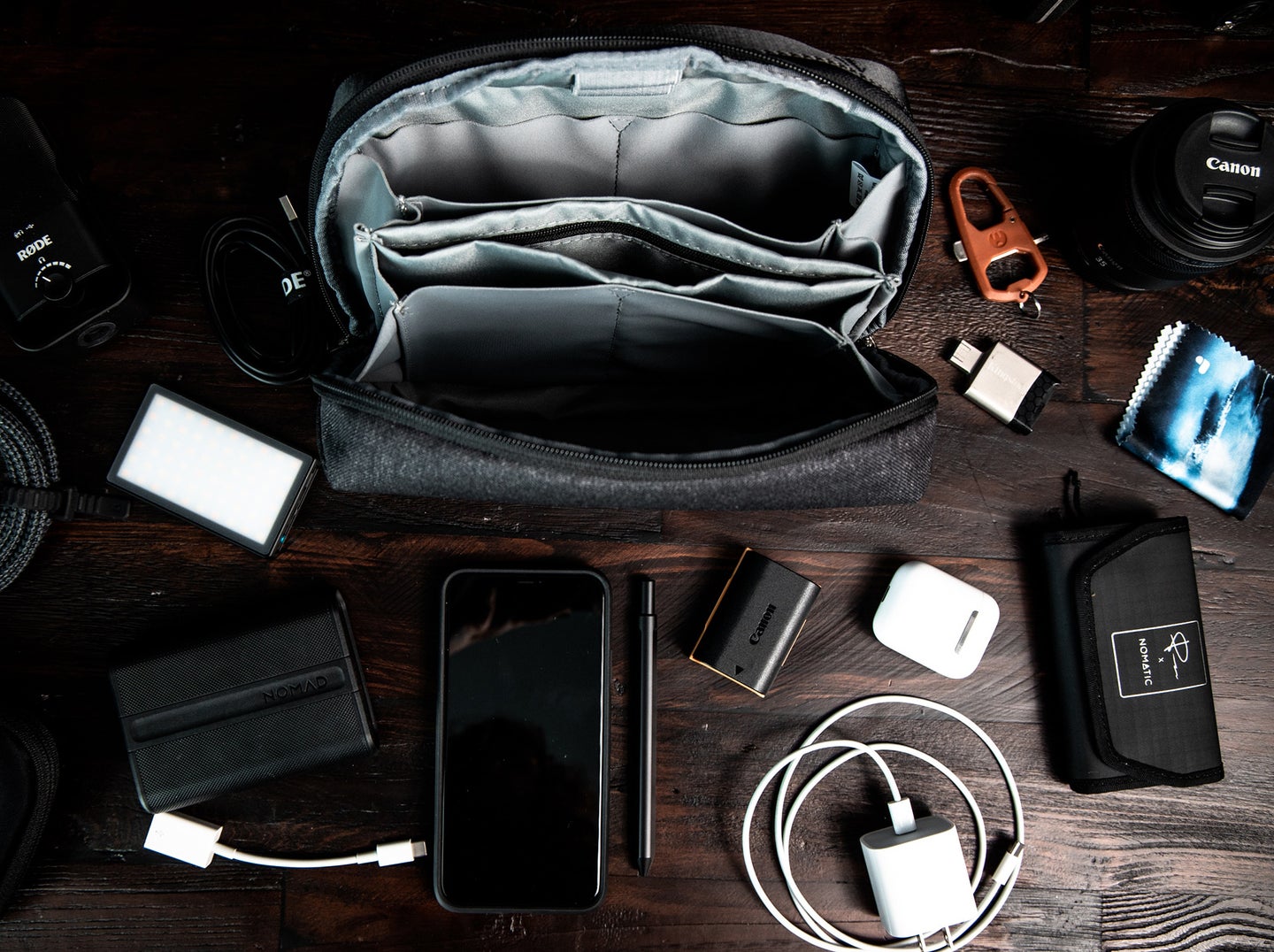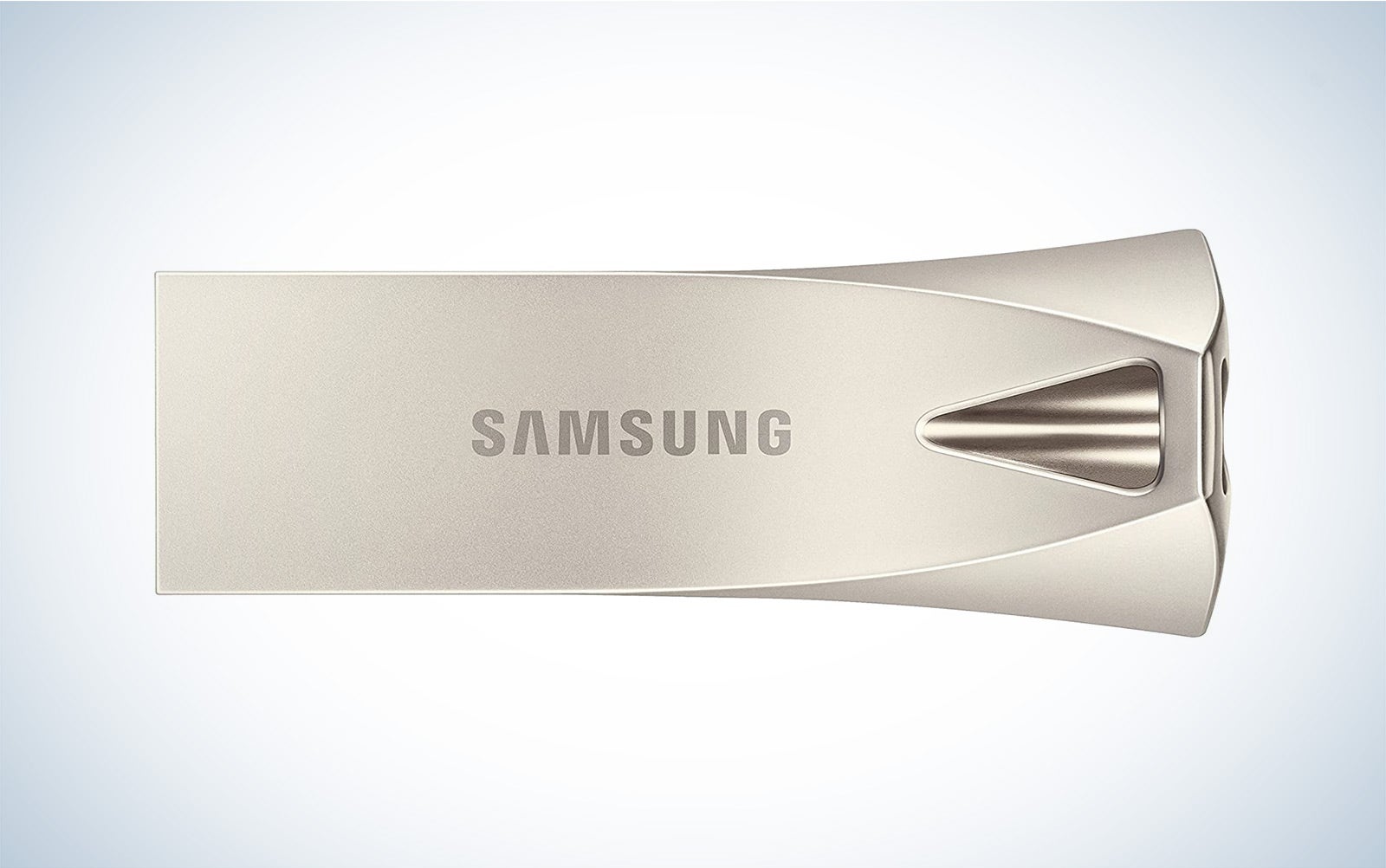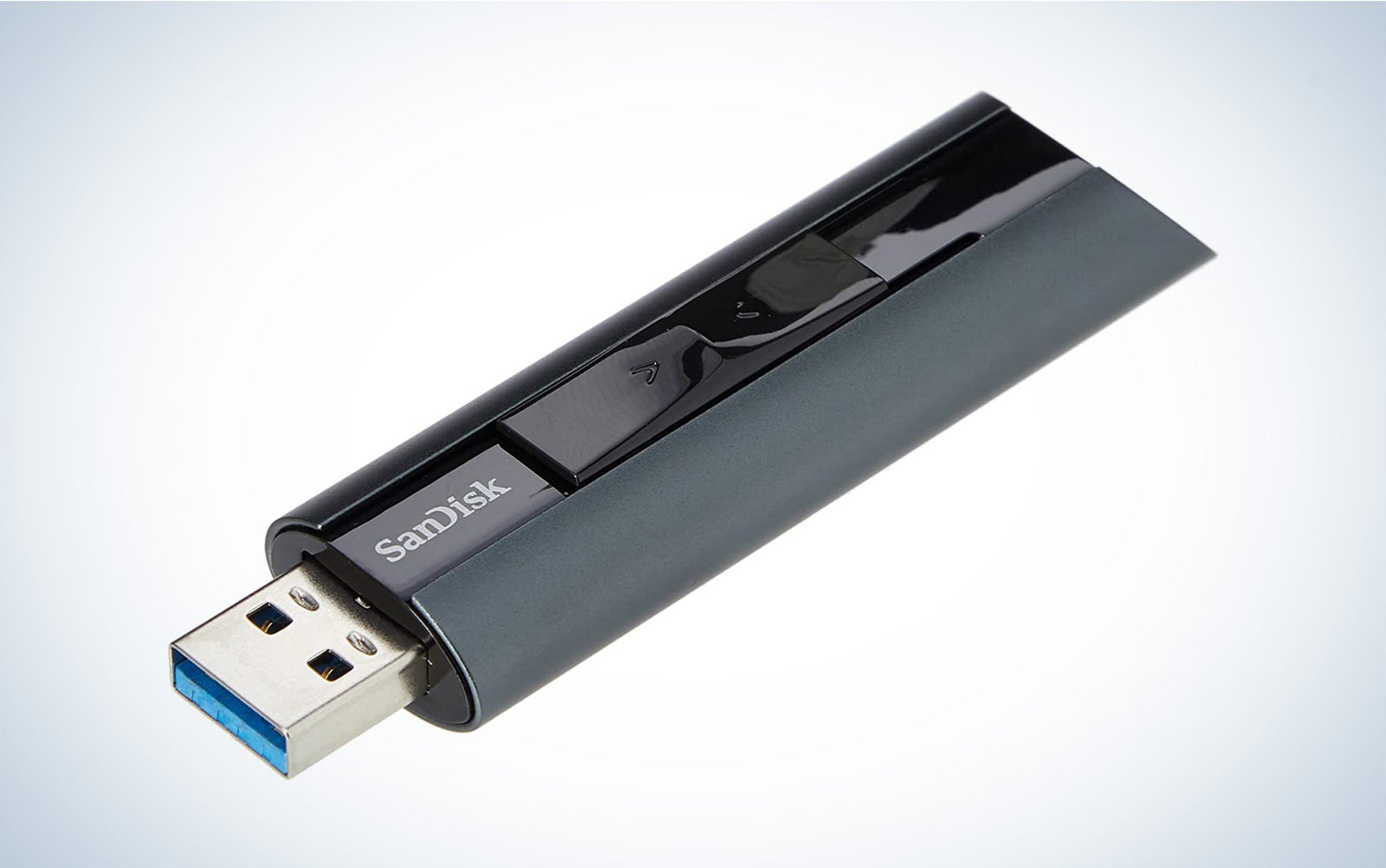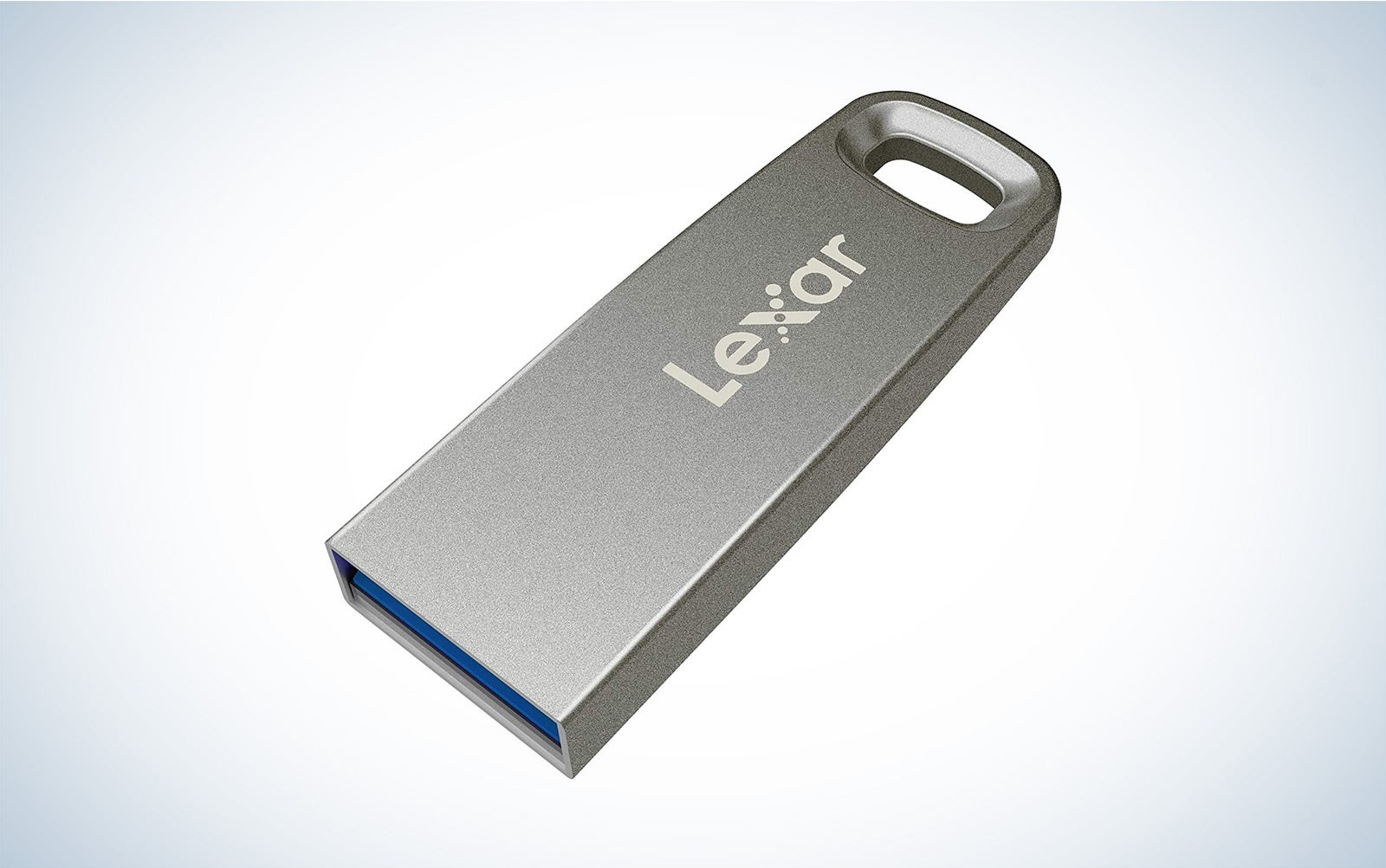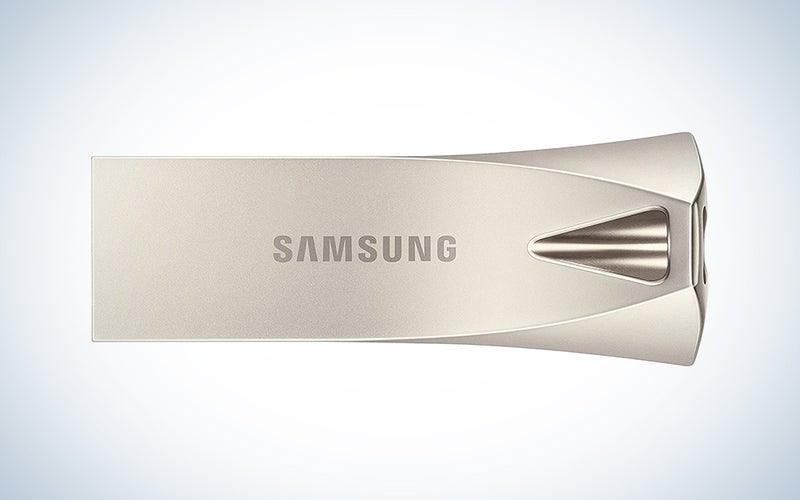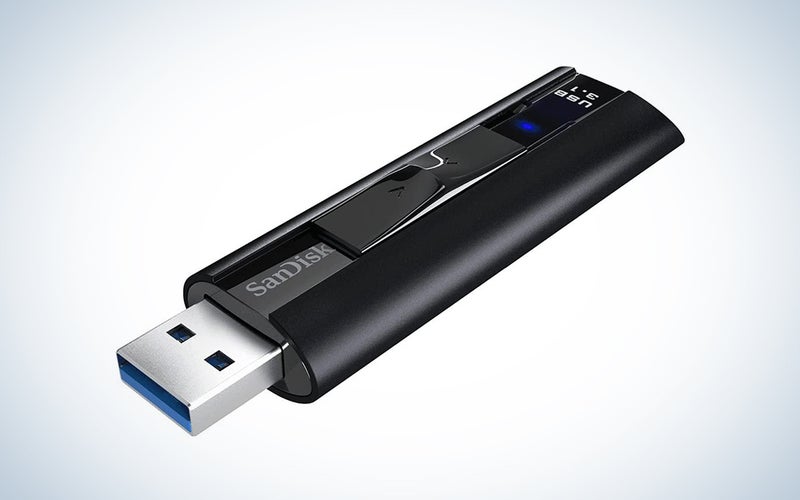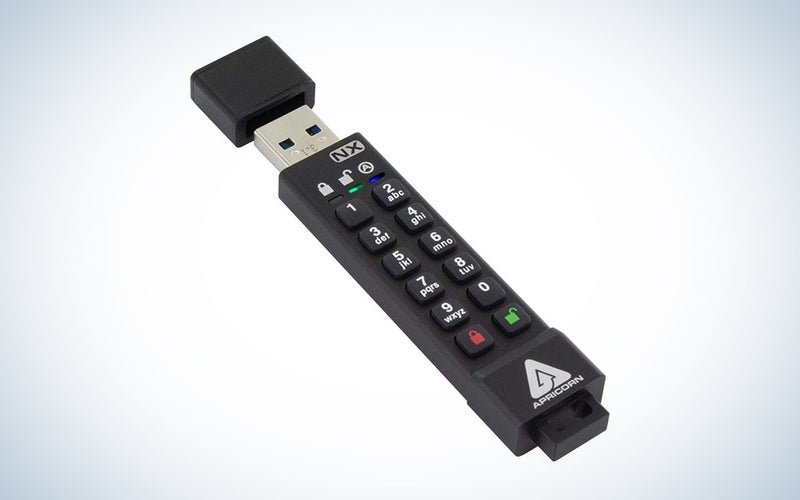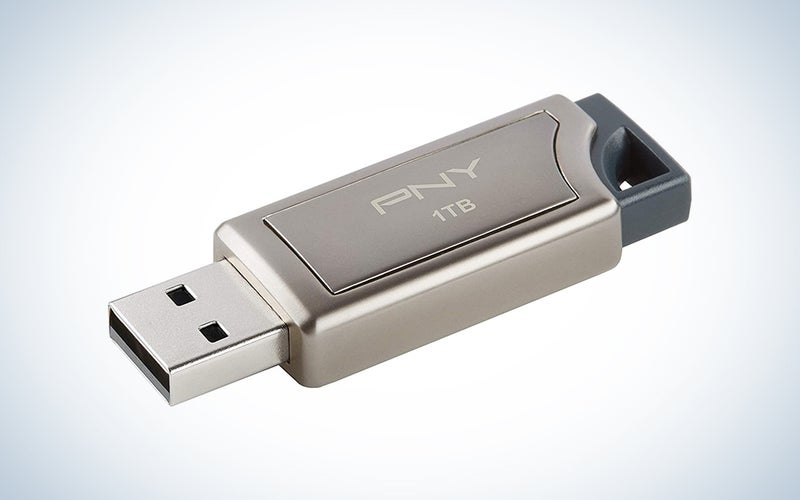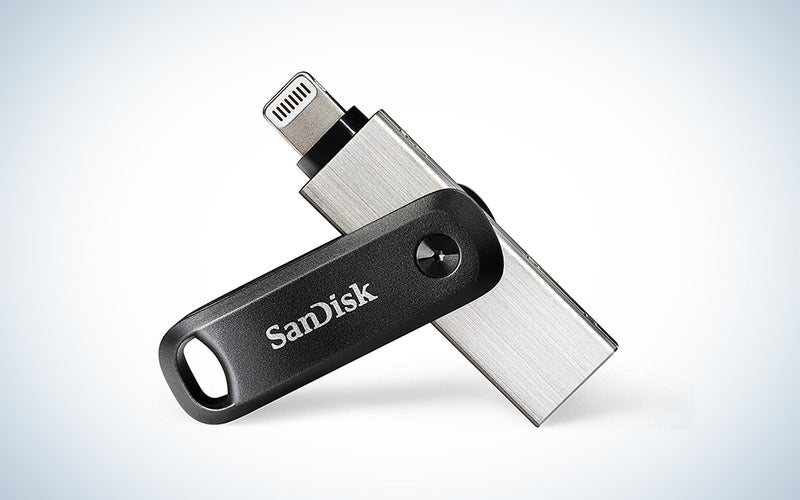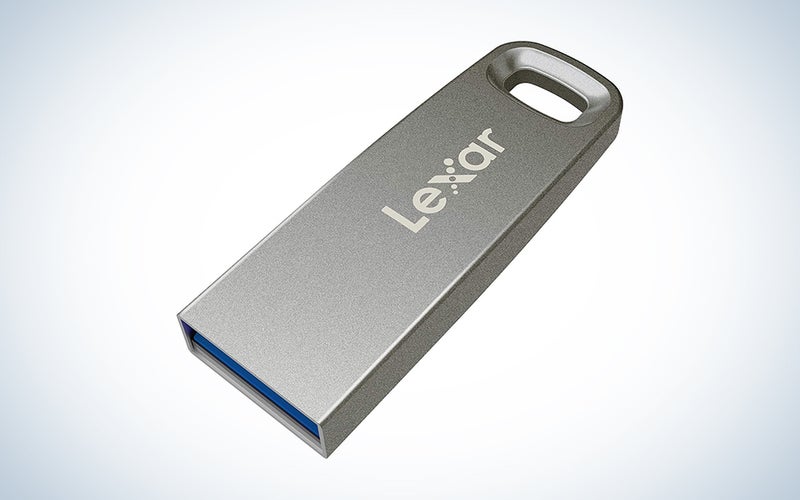We may earn revenue from the products available on this page and participate in affiliate programs. Learn more ›
The speed and storage capacity of flash memory has absolutely exploded in recent years, leading to a glut of USB flash drives available on the market. Whether you’re looking to store a ton of files, transfer them as quickly as possible, protect your data with military-grade encryption, or transfer files from your iPhone to a laptop, there’s a wide variety of options at your disposal. You can even find waterproof drives that will survive an ill-advised dip in the ocean.
So how do you pick the best flash drives when there are hundreds (if not thousands) of choices that all sound the same?
The trick is to identify the features that matter most to you and pick the best flash drives that delivers on all of those needs. Do you need the fastest flash drive? The largest flash drive? What about USB Type-C vs USB Type-A? And is data encryption important to you? Every USB flash drive offers a different combination of features that you should be aware of so that you can find the best memory stick for you.
Related: The best memory cards for photographers
- Best overall: Samsung BAR Plus
- Best high-speed: SanDisk Extreme PRO
- Best encrypted: Apricorn Aegis Secure Key 3NX
- Best 1TB: PNY Pro Elite
- Best for iPhone: SanDisk iXpand
- Best on a budget: Lexar JumpDrive M45
How we picked the best flash drives
When choosing the best flash drives, we looked at various features and specs. The read and write speeds were significant, as transferring files should not take excessively long. The durability and encryption options were also important. Lastly, we tried to include flash drives that offered a range of size capacities and different price points.
The best flash drives: Reviews and recommendations
Best overall: Samsung BAR Plus
Amazon
Why it made the cut: The Samsung BAR Plus is a USB 3.1 flash drive that checks all of our most important boxes without charging too much or offering features that most people won’t need.
Key features
- Hardware interface: USB 3.1, Type-A
- Max read speed: 400MB/s
- Available capacities: 32GB, 64GB, 128GB, 256GB
Pros
- Fast read speeds
- Rugged metal design
- Slim enough to fit into crowded ports
Cons
- Write speeds are slow
The BAR Plus is a sturdy flash drive that is available with up to 256GB of storage space. It boasts read speeds up to 400MB/s for larger drives, up to 300MB/s for the 64GB model, and 200MB/s for the 32GB model. Unfortunately, Samsung does not provide the write speeds for this drive, but they are said to be slow.
Samsung’s BAR Plus drive has a gorgeous sleek design and extreme reliability. In fact, the BAR Plus is waterproof for up to 72 hours in seawater, temperature-proof down to -40 degrees Fahrenheit and up to 185 degrees, shock-proof, magnet-proof, and X-ray-proof. It can stand up to some serious abuse should you need to take it on adventures with you. It also has a key ring to keep it attached to your gear and prevent it from getting lost.
Best high-speed flash drive: SanDisk Extreme PRO
Amazon
Why it made the cut: The SanDisk Extreme PRO is the way to go for those wanting speed. It has advertised read and write speeds of 420MB/s and 380MB/s, respectively. In addition, you can get one with up to 1TB of storage, allowing you to store a lot of files, even large ones.
Key features
- Hardware interface: USB 3.2, Type-A
- Max read/write speed: 420MB/s Read, 380MB/s Write
- Available capacities: 128GB, 256GB, 512GB, 1TB
Pros
- Extremely fast reead and write speeds
- Large storage options
- Retractable USB plug for durability
Cons
- Design is a bit thick
The Extreme PRO USB 3.2 Solid State Flash Drive is one of the fastest flash drives on the market. It is capable of read speeds up to 420MB/s and write speeds of up to 380MB/s. Not only is it fast, but it can also store a lot. They come in 128GB, 256GB, 512GB, and 1TB models. It also has built-in 128-bit AES encryption for keeping your files secure.
The Extreme PRO comes in a durable aluminum casing with a keyring, and SanDisk backs it up with a limited lifetime warranty. It’s not quite as durable as our best overall pick, but it is a bit faster, and it comes from another trusted brand, so you know you’re buying a quality product.
Best encrypted flash drive: Apricorn Aegis Secure Key 3NX
Amazon
Why it made the cut: The Aegis Secure Key 3NX is the best choice for those wanting to keep their files safe. It features a built-in keypad and military-grade hardware-based 256-bit AES XTS encryption for all your files.
Key features
- Hardware interface: USB 3.2, Type-A
- Max read/write speed: 30 fps
- Available capacities: 2GB, 4GB, 8GB, 16GB, 32GB, 64GB, 128GB
Pros
- Many size options
- Multiple layers of security
- Very durable build
Cons
- Powered by an internal battery, which could be a longevity issue
The Aegis Secure Key 3NX is all about security, which should be obvious from the moment you lay eyes on it. It includes a built-in keypad and military-grade hardware-based 256-bit AES XTS encryption for all your files. There’s even a level of hardened epoxy on the inside to prevent physical tampering. Of course, you’ll pay a premium for this level of security, but the moment you add anything to this drive, it’s locked down tight.
The 3NX is available in seven different capacities ranging from just 2GB all the way to 128GB. It has wear-resistant rubberized buttons to avoid frequently used buttons giving away your password. In addition, it is built to withstand rugged use and has a dust and water resistance rating of IP68, so not only is it secure from tampering by individuals, but also the elements.
Best 1TB Flash Drive: PNY Pro Elite
Amazon
Why it made the cut: The PNY Pro Elite offers a great mix of features that will appeal to many photographers. Not only is it available with up to 1TB of storage space, but it also boasts read and write speeds of up to 400MB/s and 250MB/s, respectively.
Key features
- Hardware interface: USB 3.0, Type-A
- Max read/write speed: 400MB/s Read, 250MB/s Write
- Available capacities: 128GB, 256GB, 512GB, 1TB
Pros
- Retractable USB
- Fast read and write speeds
- Keyring attachment cutout
Cons
- Pricey
The PNY Pro Elite is an excellent option for photographers or videographers needing to store large, high-resolution files on the go. Admittedly, the 1TB flash drive will cost you a pretty penny, but that’s expected when combining high-speed data transfer with this much storage. For context, it can store up to 200,000 pictures at 18MP or over 59 hours of 4K Ultra HD video content.
The Pro Elite has a slider design with a retractable USB jack to protect it when not in use. That also means you don’t need to keep track of a cap. In addition, it has a keyring cutout to attach a lanyard or keep it on your gear. This drive is compatible with multiple devices, but you will need an adapter to use it with newer MacBooks because it is USB Type-A.
Best iPhone flash drive: SanDisk iXpand
Amazon
Why it made the cut: The SanDisk iXpand lets you easily transfer files between a computer and your iPhone with dual Lightning and USB 3.0 Type-A connectors.
Key features
- Hardware interface: USB 3.0, Lightning and USB Type-A
- Max read/write speed: Not provided
- Available capacities: 64GB, 128GB, 256GB
Pros
- Works with iPhones and iPads
- Keyring hole
- USB Type-A connectivity as well
Cons
- Slow read/write speeds
The SanDisk iXpand is designed specifically for iPhone users, featuring a Lightning port on one end and a USB Type-A port on the other. It’s not the fastest or highest capacity drive on the market, maxing out at 90MB/s read speeds and 256GB of storage, but it boasts a few handy features like automatic photo backup using the iXpand iPhone app and
The SanDisk iXpand is specifically designed for iPhone users, featuring a Lightning port on one end and a USB Type-A port on the other. Unfortunately, SanDisk doesn’t disclose the flash drive’s speed, but it’s not the fastest one on the market. In fact, some tests reveal read and write speeds of only 12 MB/s. However, as long as you aren’t backing up your entire phone, that speed should still be plenty for most iPhone data transfer needs.
The iXpand boasts a few unique features. For example, it allows automatic photo backup using the iXpand iPhone app. It also gives you the ability to shoot videos directly onto the drive, so you don’t clog up your phone’s internal storage. In addition, the swivel design lets you transfer those files to a computer if you want to store them or edit them there. Finally, you can password-protect your files through the app, giving you some level of protection.
Best on a budget: Lexar JumpDrive M45
Amazon
Why it made the cut: Lexar’s File Vault tech protects your data if you lose the drive.
Key features
- Hardware interface: USB 3.1, Type-A
- Max read speed: 250MB/s
- Available capacities: 32GB, 64GB, 128GB
Pros
- Built-in encryption
- Very affordable
- Good read speeds
Cons
- Limited capacity
The Lexar JumpDrive M45 is an impressive budget option. It is a USB 3.1 device with an advertised read speed of up to 250MB/s. It has a rugged metal design with a keyring so that you can keep track of it more easily. And, perhaps most impressively, you get access to Lexar’s DataVault Lite software that lets you create a 256-bit AES-encrypted and password-protected “file vault” to keep your data secure.
The JumpDrive M45 has limited capacities compared to the other options available, with the largest size being only 128GB. However, that should still be plenty of storage for many, especially given the low price.
Things to consider before buying the best flash drives
When shopping for a memory stick, the quality (and price) will depend on a few key features including storage capacity, speed, and encryption. Faster, higher-capacity drives from a respected brand will naturally cost more. Manufacturers will also charge a big premium for data encryption, and flash drives that will work with your iPhone or feature the newer USB Type-C port are often a bit pricier as well. We cover all of this and more below.
Find the best combination of speed, storage, and reliability
If we had to prioritize the features that matter the most to the most people—especially photographers—we would start with speed, then reliability, then storage capacity. This translates into a few key specs that you should be watching out for.
In terms of speed, you’ll want to find a USB 3.1 flash drive—not USB 3.0 and definitely not USB 2.0. This will guarantee read and write speeds between 200 megabytes per second (MB/s) and 400MB/s, with some drives claiming even faster. In terms of build quality and reliability, a water- and temperature-proof flash drive is a must if you’re taking your drive on-location or are planning to store really important data. Finally, as cameras get better, file sizes get larger, so a drive that offers at least 256 gigabytes of space is a big plus.
Features that are less important but nice if you can find them are USB-C connectivity, a sleek design, and some form of encryption or password protection.
Prioritize speed for faster image transfer
If your goal is to transfer large photo files between computers or store your latest shoot on a flash drive as a form of backup, your first priority should be speed.
Finding the fastest flash drive is all about finding the right USB spec. Most consumer flash drives come in USB 2.0, USB 3.0, and USB 3.1—the higher the number, the better. USB 2.0 is extremely slow by today’s standards and should be avoided; USB 3.0 is passable for most uses but is quickly becoming outdated; USB 3.1 is the fastest spec, and can reach a maximum data transfer rate of 5Gbps (625MB/s). There are technically faster specs out there—USB 3.1 Gen 2, and eventually USB 4—but these are usually reserved for larger external SSDs as opposed to a traditional model.
For now, you’ll want to look for a flash drive that’s advertised as USB 3.1. These will reach real-world read and write speeds of approximately 400 MB/s, allowing you to transfer 4GB worth of photos in less than 25 seconds. Not bad for a thumb drive.
For the best security, buy an encrypted flash drive
If you’re determined to keep the photos and files on your flash drive from falling into the wrong hands, you’ll want to look into one that offers some level of encryption.
Software-based encryption is a good first step, but the gold standard is hardware-based 256-bit AES encryption with XTS for an additional layer of protection. The “hardware-based” means that the security functions are contained on an onboard processor instead of some external program that you use to encrypt your data, and 256-bit is the highest level of the Advanced Encryption Standard, or AES. In short: all of this makes it that much harder for bad actors to get at your data.
If you’re really serious about security, you can pair this with features like a built-in pin pad that keeps the encrypted flash drive locked up until you’re ready to use it, and some sort of hardware protection in case someone tries to crack it open and get at the data directly.
How much storage is too much?
Many USB flash drives max out at around 256GB of storage space, and that’s more than enough for most people. But if you need to carry around more data than this, there are 1-terabyte and even 2-terabyte models available from trusted brands. This begs an important question: How much storage is too much?
Even 1TB is an awful lot of data to put on a drive the size of a fun-size Twix bar, so we wouldn’t recommend going any bigger than this. At 1TB, you can store approximately 250,000 12MP photos, 500 hours of HD video, or 6.5 million pages of documents. Anything beyond that and it’s worth investing in an external SSD, which will probably offer faster transfer speeds, better security, and a larger footprint (i.e. they’re harder to lose) than most flash drives.
Pick the right port for the job
Most of the USB flash drives on the market still use the classic USB Type-A port that we all know so well, but not all devices even include a USB-A port anymore. Many newer ultrabooks and all of the most recent MacBooks exclusively feature USB Type-C, as do many Android phones, and if you want to transfer photos from an iPhone, you’ll have to deal with Apple’s proprietary Lightning connector.
Whatever the case, when you’re shopping for a flash drive, you’ll want to make sure that you pick the right port for the job. That means choosing a newer USB-C model if you want to transfer files from a USB-C laptop or Android smartphone, or a special iPhone flash drive if you spend a lot of time in the Apple ecosystem.
FAQs
Q: How long will a flash drive last?
With normal use, you can expect a USB flash drive to last you between five and ten years. Unlike magnetic drives with lots of moving parts, flash memory won’t degrade because of wear and tear. Instead, the limitation is in the number of “write cycles” for which the flash memory is rated. Just keep in mind that the more you use it, the faster it will wear down and eventually fail.
Q: Can I transfer pictures from my iPhone directly to a flash drive?
You can transfer pictures from your iPhone to a flash drive, but you’ll need to purchase a special one that comes equipped with a lightning port. For better or worse, Apple still hasn’t switched their iPhones over to USB-C, so you’ll need to buy a special iPhone flash drive (see above) that allows you to connect to your phone with one end and a computer with the other. This way, you can pull photos and other data off of your iPhone using the lightning port, and transfer it to your computer using a standard USB Type-A or Type-C port.
Q: Are flash drives reliable for backup?
Reliable enough? Yes. Would we recommend it? Probably not. For data transfer or as an additional form of backup on-location, a flash drive will do. But if you’re looking to back up your whole photo archive, most flash drives don’t offer enough storage and are far too easy to misplace. You can purchase flash drives in 1TB or even 2TB varieties, but for backup, we’d recommend looking into a two-tier system that includes off-site cloud storage on the one hand, and a dedicated 5TB+ external hard drive on the other.
Related: The best microSD cards for photographers
Final thoughts on the best flash drives
With flash storage getting so cheap and ubiquitous, it’s easy to get overwhelmed when shopping for the best flash drives. We found the Samsung BAR Plus to be the best balance of important features. It has fast write speeds and large storage capacities, all in a rugged, durable body. Plus, with its sleekness, it can easily fit into ports that other devices may surround.
